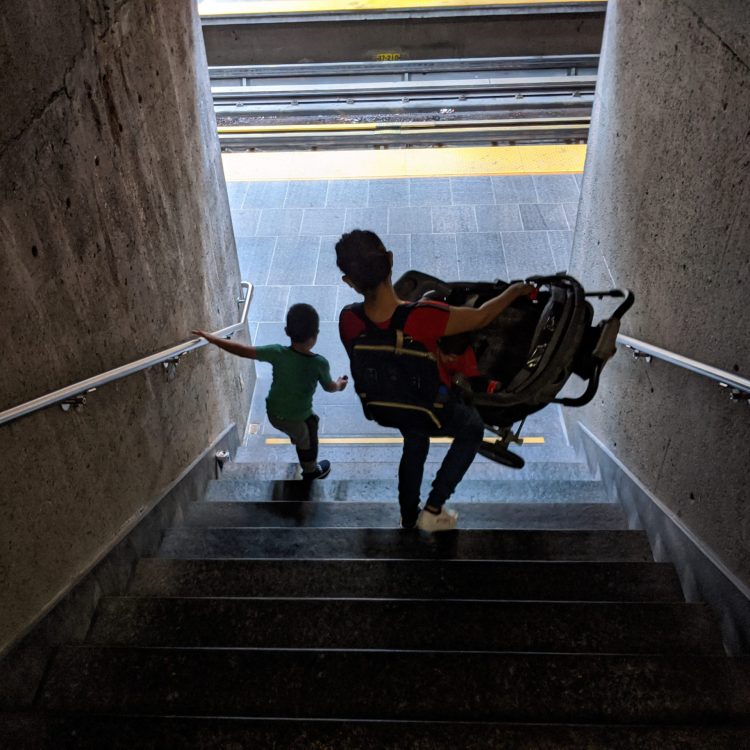Transit systems with stations and stops that are designed with the able-bodied person in mind cannot be used to their fullest extent by people with disabilities. Yet, the price of tickets to use a transit system does not take into account the fact it may not serve all paying users equally.
For example, in Montréal, the price of a monthly pass for unlimited use of the metro system is $90 a month (up from $85 a month last year). This is the price that all people have to pay, unless they have a discount for their under age 18, student, or senior status. Yet, because most stations lack elevators, passengers with reduced mobility can only access 24% of Montréal’s metro stations.
Passengers with reduced mobility who use transit often are charged the same transit fare as able-bodied transit-users, but do not have access to the same amount of services. Despite paying the same to use the metro as able-bodied passengers, wheelchair users, parents with strollers, and injured passengers (among others) are not able to use the same 68 stations as able-bodied fare-payers. This is why transit inaccessibility is not just an access problem, but also a financial problem.
In Montréal, there are some paratransit options available to people with disabilities, but these options are often inconvenient, inefficient, and much more time-consuming when compared to the extent and speed of the metro system available able-bodied people. Further, these paratransit options are not available to all stakeholders with reduced mobility. As mentioned above, parents with strollers are a group that relies on the metro to get around but do not have any discounts and often face accessibility obstacles as well.
Transit systems that do not take into account the possible obstacles that they may create for their passengers need to make an effort to resolve this inequitable access. In Montréal, the metro and bus system work well for the able-bodied user. Ideally, the goal is to make it work just as well for disabled and reduced mobility stakeholders. In its current state, however, passengers with reduced mobility cannot take advantage of it without added fees of pain, struggle, and extra time due to the accessibility obstacles at many stations. Until we reach a transit system which can be used by all with ease, Montréal at least needs a more equitable fare model that takes into account its accessibility shortcomings.

